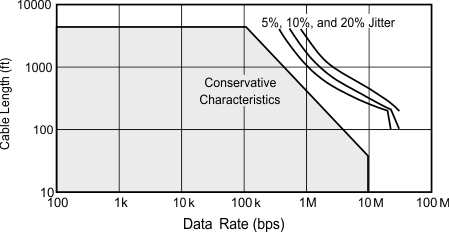SLLSFS0 April 2024 THVD4421
PRODUCTION DATA
- 1
- 1 Features
- 2 Applications
- 3 Description
- 4 Pin Configuration and Functions
-
5 Specifications
- 5.1 Absolute Maximum Ratings
- 5.2 ESD Ratings
- 5.3 ESD Ratings [IEC]
- 5.4 Recommended Operating Conditions
- 5.5 Thermal Information
- 5.6 Power Dissipation
- 5.7 Electrical Characteristics
- 5.8 Switching Characteristics_RS-485_500kbps
- 5.9 Switching Characteristics_RS-485_20Mbps
- 5.10 Switching Characteristics, Driver_RS232
- 5.11 Switching Characteristics, Receiver_RS232
- 5.12 Switching Characteristics_MODE switching
- 5.13 Switching Characteristics_RS-485_Termination resistor
- 5.14 Switching Characteristics_Loopback mode
- 5.15 Typical Characteristics
- 6 Parameter Measurement Information
- 7 Detailed Description
- 8 Application and Implementation
- 9 Device and Documentation Support
- 10Revision History
- 11Mechanical, Packaging, and Orderable Information
Package Options
Mechanical Data (Package|Pins)
- RHB|32
Thermal pad, mechanical data (Package|Pins)
- RHB|32
Orderable Information
8.2.1.1 Data Rate and Bus Length
There is an inverse relationship between data rate and cable length, which means the higher the data rate, the short the cable length; and conversely, the lower the data rate, the longer the cable length. While most RS-485 systems use data rates between 10kbps and 100kbps, some applications require data rates up to 250kbps at distances of 4000 feet and longer. Longer distances are possible by allowing for small signal jitter of up to 5 or 10%.
Even higher data rates are achievable (that is, 50Mbps for the THVD24xxV) when the interconnect is short enough (or has suitably low attenuation at signal frequencies) to not degrade the data.
 Figure 8-3 Cable Length vs Data Rate Characteristic
Figure 8-3 Cable Length vs Data Rate Characteristic